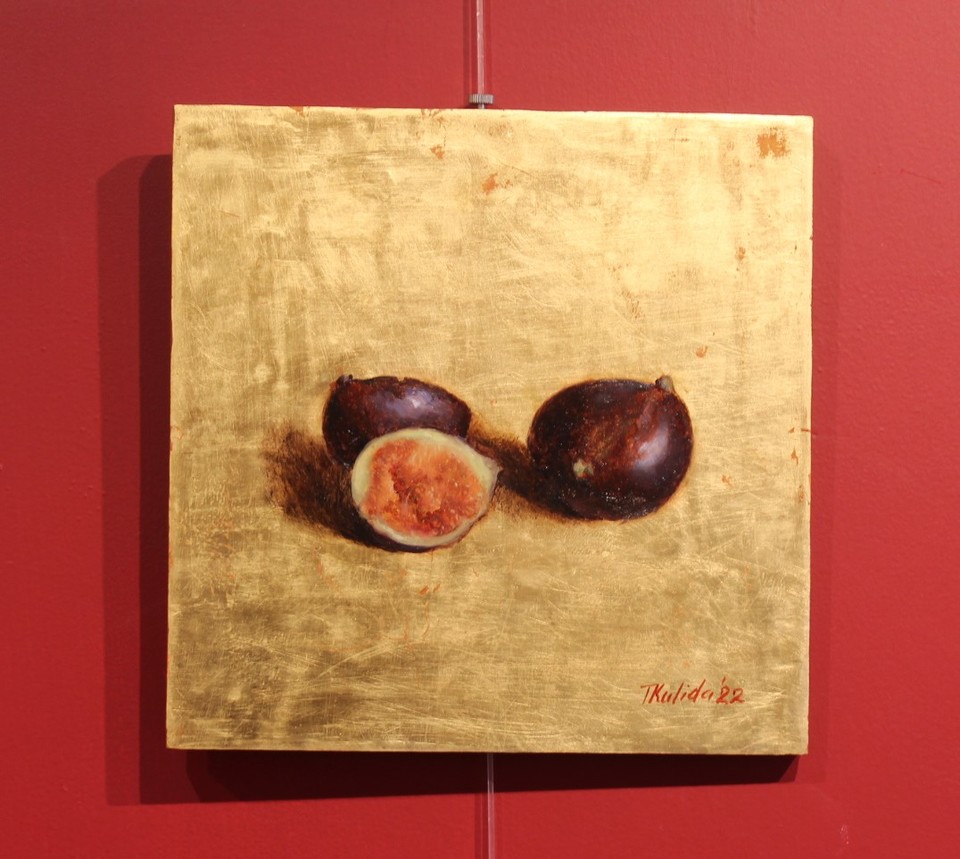oil on gold water gilding
240mm x 240mm
Watergilding and oil
Traditional water gilding methods originate in Europe in the 12-13 century, blossoming all the way through Renaissance as seen in the magnificent altarpieces and then remained as a decorative feature in interiors and framing. Gilding has been also used by more contemporary artists, most famously Gustav Klimt.
True water gilding is a labor intensive process which requires special materials and tools.
The process starts with high quality wood panels. The surface has to be prepared and covered in several layers of chalk gesso which is sanded smooth and sealed. Then 4 layers of transparent bole clay(2 yellow and 2 red) are applied to give the semi-transparent sheets of metal a luminous quality. Once the water size is applied, the water clay becomes activated and the metal sheets (gold or imitation) stick onto the surface. When the surface is fully dried it gets burnished with Agate stone and then sealed before being painted on. This organic process for creating a gilt surface is time consuming and requires special skill but there is nothing else as luminous and luscious as the true gilded surface. Combined with oil paint, gilded artworks have a jewel like quality, rich, shiny and warm.


